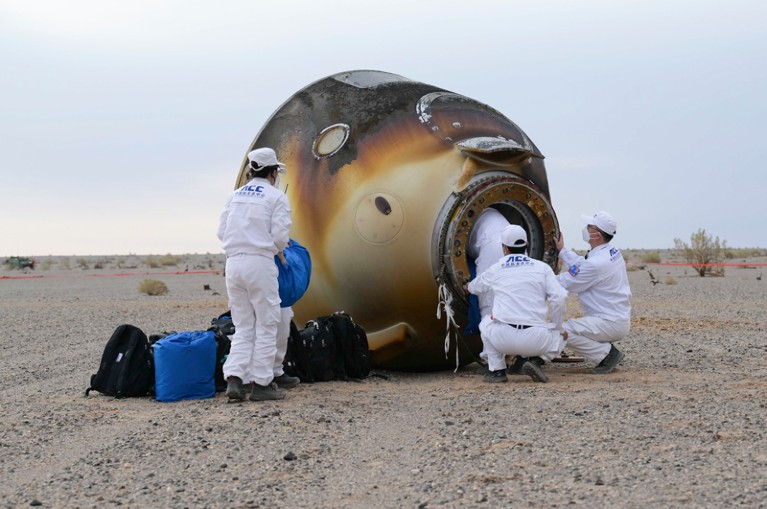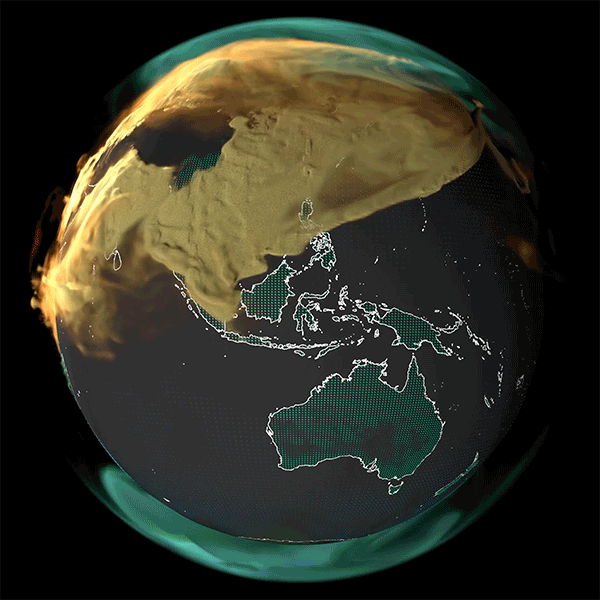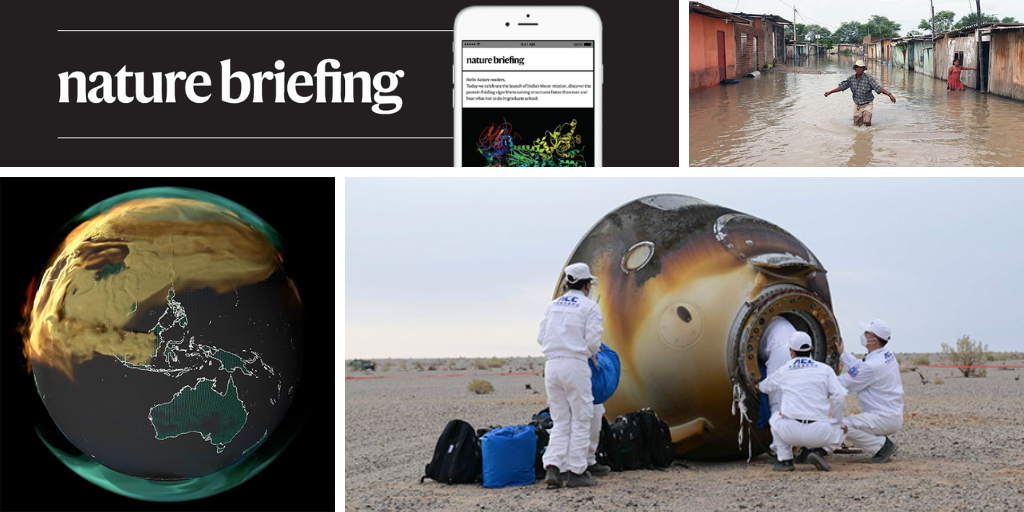Hello Nature readers, would you like to get this Briefing in your inbox free every day? Sign up here.

Credit: Li Zhipeng/Xinhua/eyevine
Three astronauts from China’s Shenzhou 15 mission touched down safely at a landing site in the Gobi Desert after six months on the Tiangong space station. During their time in space, the crew members embarked on spacewalks and performed experiments, including imaging an astronaut’s skin using a microscope and testing a device that turns heat into electrical power.
See more of the month’s sharpest science shots, selected by Nature’s photo team.
The average global temperature reached 17 ℃ on Monday — the hottest since at least 1979 — according to data from the US National Centers for Environmental Prediction. On Tuesday, it was even hotter. Models, instrument recordings and data gleaned from tree rings and ices cores indicate “it hasn’t been this warm since at least 125,000 years ago,” says climate scientist Paulo Ceppi. We are at the start of what could be a particularly powerful El Niño, a natural weather event that leads to warmer global temperatures on top of the effects of human-caused climate change.
Bloomberg | 6 min read & The Washington Post | 5 min read
Read more: El Niño is here — how bad will it be? (Nature | 5 min read)
One reason why some people are more susceptible to falling ill than others is their body’s response to inflammation. “We all need some inflammation, but it has to be the right amount at the right place at the right time,” says physician-scientist Sunil Ahuja. Ahuja and his colleagues found that some people’s immune systems are better at bouncing back from infections and other stressors that trigger inflammation. There’s no sure way to predict how you’ll weather any particular bout of disease, but Ahuja recommends reducing exposure risks (by wearing a protective mask, for example) and — this won’t surprise you — enjoying a healthy diet and plenty of exercise.
Scientific American | 6 min read
Reference: Nature Communications paper
Features & opinion

(Elena Resko for Nature)
A sustainable global diet that is healthy for people and the planet would require slashing red-meat production by around 75%. The options for non-meat protein are expanding, each with its own benefits and drawbacks:
• Lab-grown meat: extremely high energy demand, but low land and water use
• Plant-based substitutes: soya and pea protein are widely available, but some products are as highly processed as their real-meat counterparts
• Proteins from genetically modified microbes: can create cow whey protein, egg-white proteins or muscle myoglobin, but face some regulatory hurdles
• Fungi proteins: many large companies are working on tweaking the process to find the most desirable nutrition, taste and texture at the lowest cost
• Algae: seaweed farming could sequester carbon, but not everyone likes the green colour and fishy taste
• Bacterial proteins: some bacteria produce protein naturally if they are supplemented with hydrogen, but making the gas takes a lot of energy
• Insects: widely available but surprisingly expensive, mainly because of the energy and labour costs, and the inefficiencies of small-scale production
Almost all alternative proteins are healthier than red meat, and almost all will lighten the burden on the planet. And there’s always good old plants: options such as peas, beans, grains and nuts are a cheap and ubiquitous protein source that have a long track record for maintaining human health and emitting less carbon. “The clear winner is minimally processed plant-based sources of protein. In any assessment, they win hands down,” says food-systems researcher Marco Springmann.
“Bullying happens when we have power differences, and, unfortunately, in academia we have unique power difference structures,” says nanomedicine researcher and anti-bullying advocate Morteza Mahmoudi. Many major decisions in an early-career researcher’s life are in the hands of one person, their supervisor or principal investigator. And often, says Mahmoudi, the academic system seems to protect the bullier. Last month, former co-workers of the ancient-DNA researcher Alan Cooper were shocked to find that he had landed a new role after being fired amid allegations of bullying. For those who find themselves the target of harassment, Mahmoudi advises to “document everything”. “Academic bullies are clever,” he says. “They barely leave a trace of their actions.”
Nature | 20 min listen or 12 min read
People who have friends at work perform better, are more engaged and have less burnout. An associate dean for research and a chief learning officer have some suggestions to help you forge these connections in the hybrid or remote work environment:
• Ask for (or adopt) a work buddy
• Introduce yourself to new employees
• Go to professional-development events and affinity groups
• Attend or initiate social events at work
Image of the week

Fossil fuel emissions from the Northern Hemisphere swirl in this visualization from NASA, which shows the CO2 in Earth’s atmosphere as as if it were visible to the human eye. Four major sources are shown over the course of the year 2021: fossil fuels in orange, burning biomass in red, land ecosystems in green, and ocean exchange in blue. The dots on the surface show how atmospheric carbon dioxide is absorbed by land ecosystems (in green) and the ocean (in blue). (NASA Scientific Visualization Studio | Heaps of cool short videos)







More News
China’s Chang’e-6 launches successfully — what happens next?
African wild dogs with pleading eyes sparks rethink of dog evolution
Author Correction: Stepwise activation of a metabotropic glutamate receptor – Nature